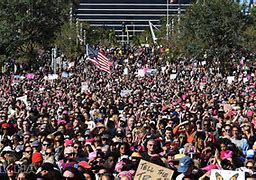Protests Cause US Officials to Rethink Use of School Police Officers
An increasing number of American cities are rethinking the presence of law enforcement officers in their schools.
City officials are considering ways to answer the concerns of thousands of people who have protested the death of George Floyd. In some areas, young protesters have been demanding the removal of officers from schools.
George Floyd, a 46-year-old black man, died May 25 in Minneapolis, Minnesota after a white police officer pressed his knee on his neck for nearly nine minutes. Floyd was handcuffed and lying on the ground. He can be heard saying "I can't breathe" in videos of his arrest and death.
Minneapolis suspended its school resource officer program last week. School district officials in nearby Saint Paul, Minnesota, and in Denver, Colorado, are considering doing the same. Protesters in Charlottesville, Virginia have made the end of its school resource officer program one of their demands.
School resource officers are law enforcement officers who are responsible for keeping schools and their students safe. Along with enforcing the law, the resource officers are expected to act as unofficial counselors and provide guidance on issues such as bullying and drunk driving.
Portland Public Schools, the largest school district in Oregon, announced last week it was cutting ties with the Portland Police Bureau. Portland Mayor Ted Wheeler said he would also discontinue using school resource officers in two of the city's smaller districts.
"Leaders must listen and respond to community," Wheeler said. "We must disrupt the patterns of racism and injustice."

Many in Portland have voiced support for the decision to remove the officers. But others raised immediate concerns about student safety in the event of a school shooting or other emergency.
Mo Canady is head of The National Association of School Resource Officers. He described any decision to remove the officers from schools as a "knee-jerk reaction." In other words, the decision happened very quickly and without much thought.
Canady added that the actions by a few school districts could cause many other districts to make the same decision. He said such moves cause harm to students around the country.
Canady called Floyd's death "atrocious" and the actions of the Minneapolis police "evil." But he said that when school resource officer programs are "done right," they can be good examples of community-based policing.
But critics of the programs say the officers' presence can also lead to the criminalization of students, especially students of color. In 2015, a school resource officer in South Carolina was caught on video forcing a female student on the ground and pulling her across a classroom. The student had refused to surrender her phone to the officer.
There are an estimated 25,000 school resource officers nationwide, Canady said.
Across the United States, 43 percent of public schools had an armed law enforcement officer present at least once a week in the 2015-2016 school year. That was the last year the National Center for Education Statistics studied the issue.
I'm Ashley Thompson.













